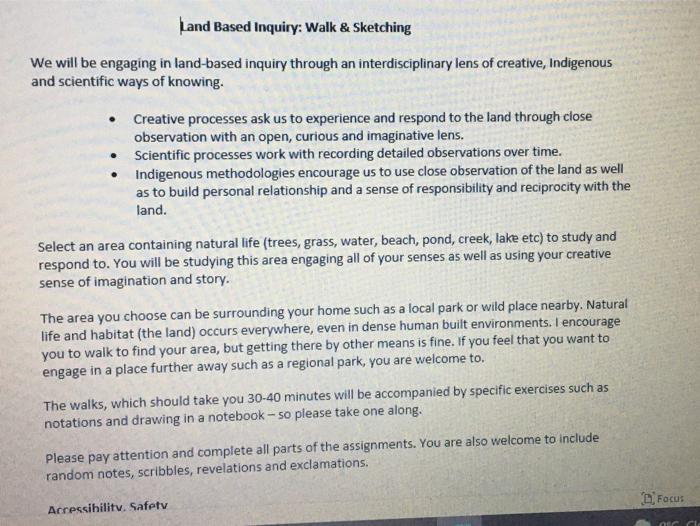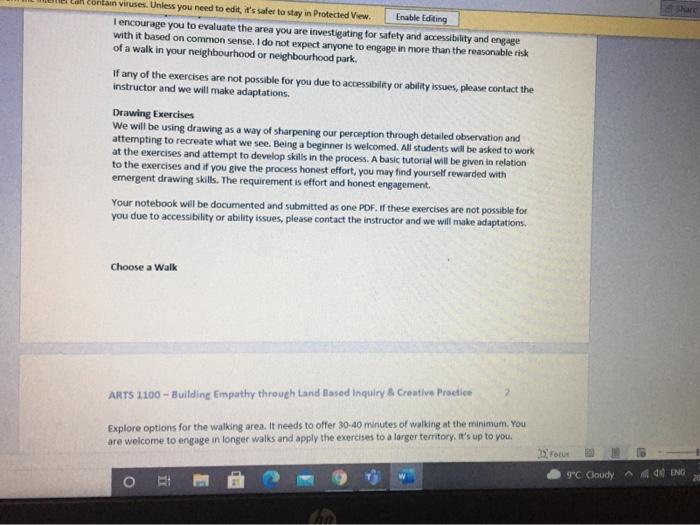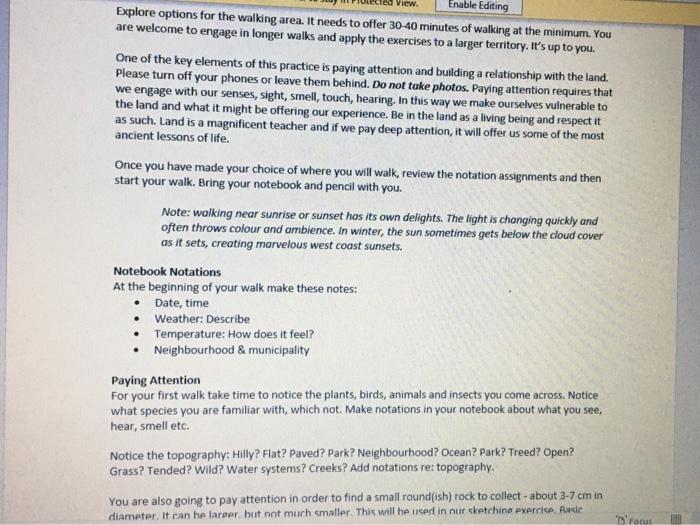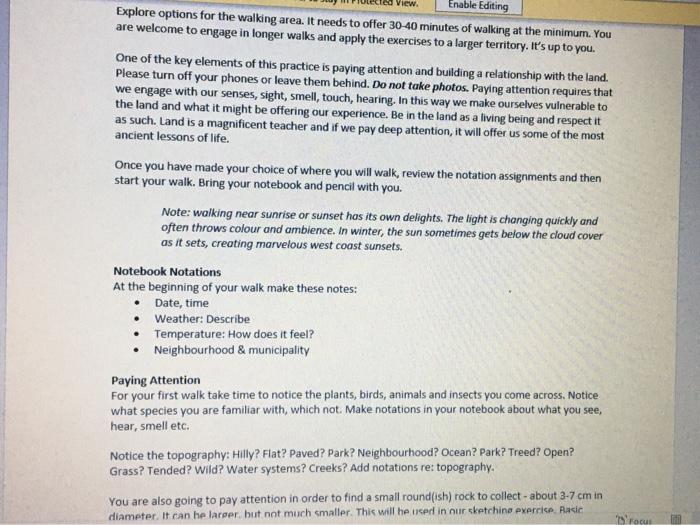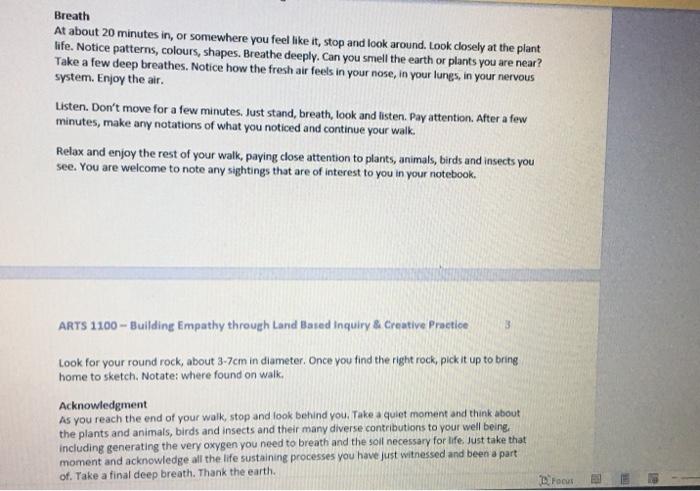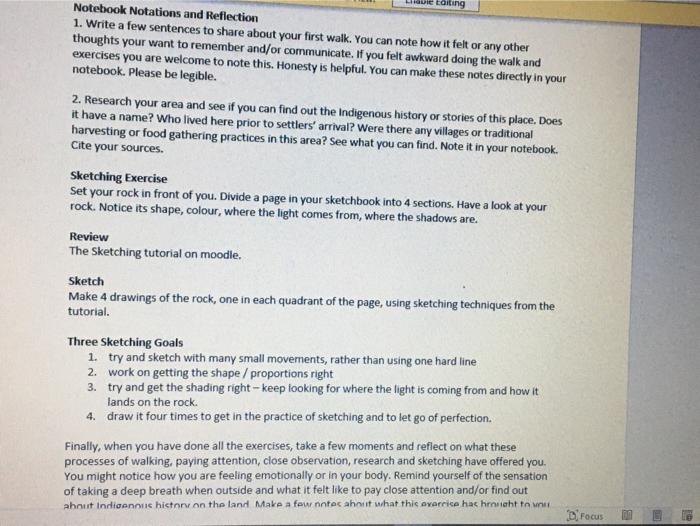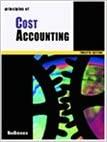draw a sketch and make some notebook notes.
Land Based Inquiry: Walk & Sketching We will be engaging in land-based inquiry through an interdisciplinary lens of creative, Indigenous and scientific ways of knowing. Creative processes ask us to experience and respond to the land through close observation with an open, curious and imaginative lens. Scientific processes work with recording detailed observations over time. Indigenous methodologies encourage us to use close observation of the land as well as to build personal relationship and a sense of responsibility and reciprocity with the land. Select an area containing natural life (trees, grass, water, beach, pond, creek, lake etc) to study and respond to. You will be studying this area engaging all of your senses as well as using your creative sense of imagination and story. The area you choose can be surrounding your home such as a local park or wild place nearby. Natural life and habitat (the land) occurs everywhere, even in dense human built environments. I encourage you to walk to find your area, but getting there by other means is fine. If you feel that you want to engage in a place further away such as a regional park, you are welcome to. The walks, which should take you 30-40 minutes will be accompanied by specific exercises such as notations and drawing in a notebook - so please take one along. Please pay attention and complete all parts of the assignments. You are also welcome to include random notes, scribbles, revelations and exclamations. Focus Accessibility. Safety La contain viruses. Unless you need to edit it's safer to stay in Protected View Enable Editing I encourage you to evaluate the area you are investigating for safety and accessibility and engage with it based on common sense. I do not expect anyone to engage in more than the reasonable risk of a walk in your neighbourhood or neighbourhood park If any of the exercises are not possible for you due to accessibility or ability issues, please contact the instructor and we will make adaptations Drawing Exercises We will be using drawing as a way of sharpening our perception through detailed observation and attempting to recreate what we see. Being a beginner is welcomed. All students will be asked to work at the exercises and attempt to develop skills in the process. A basic tutorial will be given in relation to the exercises and if you give the process honest effort, you may find yourself rewarded with emergent drawing skills. The requirement is effort and honest engagement. Your notebook will be documented and submitted as one PDF. If these exercises are not possible for you due to accessibility or ability issues, please contact the instructor and we will make adaptations. Choose a Walk ARTS 1100 - Building Empathy through and Based Inquiry & Creative Practice 2 Explore options for the walking area. It needs to offer 30-40 minutes of walking at the minimum. You are welcome to engage in longer walks and apply the exercises to a larger territory, it's up to you, Focus O 9C Cloudy de ENG View. Enable Editing Explore options for the walking area. It needs to offer 30-40 minutes of walking at the minimum. You are welcome to engage in longer walks and apply the exercises to a larger territory. It's up to you. One of the key elements of this practice is paying attention and building a relationship with the land. Please turn off your phones or leave them behind. Do not take photos. Paying attention requires that we engage with our senses, sight, smell, touch, hearing. In this way we make ourselves vulnerable to the land and what it might be offering our experience. Be in the land as a living being and respect it as such. Land is a magnificent teacher and if we pay deep attention, it will offer us some of the most ancient lessons of life. Once you have made your choice of where you will walk, review the notation assignments and then start your walk. Bring your notebook and pencil with you. Note: walking near sunrise or sunset has its own delights. The light is changing quickly and often throws colour and ambience. In winter, the sun sometimes gets below the cloud cover as it sets, creating marvelous west coast sunsets. Notebook Notations At the beginning of your walk make these notes: Date, time Weather: Describe Temperature: How does it feel? Neighbourhood & municipality Paying Attention For your first walk take time to notice the plants, birds, animals and insects you come across. Notice what species you are familiar with, which not. Make notations in your notebook about what you see, hear, smell etc. Notice the topography: Hilly? Flat? Paved? Park? Neighbourhood? Ocean? Park? Treed? Open? Grass? Tended? Wild? Water systems? Creeks? Add notations re: topography. You are also going to pay attention in order to find a small round(ish) rock to collect - about 3-7 cm in diameter. It can be larger but not much smaller. This will be ined in our sketching exercise. Racic srcu View. Enable Editing Explore options for the walking area. It needs to offer 30-40 minutes of walking at the minimum. You are welcome to engage in longer walks and apply the exercises to a larger territory. It's up to you. One of the key elements of this practice is paying attention and building a relationship with the land. Please turn off your phones or leave them behind. Do not take photos. Paying attention requires that we engage with our senses, sight, smell, touch, hearing. In this way we make ourselves vulnerable to the land and what it might be offering our experience. Be in the land as a living being and respect it as such. Land is a magnificent teacher and if we pay deep attention, it will offer us some of the most ancient lessons of life. Once you have made your choice of where you will walk, review the notation assignments and then start your walk. Bring your notebook and pencil with you. Note: walking near sunrise or sunset has its own delights. The light is changing quickly and often throws colour and ambience. In winter, the sun sometimes gets below the cloud cover as it sets, creating marvelous west coast sunsets. Notebook Notations At the beginning of your walk make these notes: Date, time Weather: Describe Temperature: How does it feel? Neighbourhood & municipality Paying Attention For your first walk take time to notice the plants, birds, animals and insects you come across. Notice what species you are familiar with, which not. Make notations in your notebook about what you see, hear, smell etc. Notice the topography: Hilly? Flat? Paved? Park? Neighbourhood? Ocean? Park? Treed? Open? Grass? Tended? Wild? Water systems? Creeks? Add notations re: topography. You are also going to pay attention in order to find a small round(ish) rock to collect - about 3-7 cm in diameter. It can be larger but not much smaller. This will be ined in our sketching exercise. Racic srcu Breath At about 20 minutes in, or somewhere you feel like it, stop and look around. Look closely at the plant life. Notice patterns, colours, shapes. Breathe deeply. Can you smell the earth or plants you are near? Take a few deep breathes. Notice how the fresh air feels in your nose, in your lungs, in your nervous system. Enjoy the air. Listen. Don't move for a few minutes. Just stand, breath, look and listen. Pay attention. After a few minutes, make any notations of what you noticed and continue your walk. Relax and enjoy the rest of your walk, paying close attention to plants, animals, birds and insects you see. You are welcome to note any sightings that are of interest to you in your notebook. ARTS 1100 - Building Empathy through Land Based Inquiry & Creative Practice 3 Look for your round rock, about 3-7cm in diameter. Once you find the right rock, pick it up to bring home to sketch. Notate:where found on walk. Acknowledgment As you reach the end of your walk, stop and look behind you. Take a quiet moment and think about the plants and animals, birds and insects and their many diverse contributions to your wellbeing. including generating the very oxygen you need to breath and the soll necessary for life. Just take that moment and acknowledge all the life sustaining processes you have just witnessed and been a part of. Take a final deep breath. Thank the earth. Droot Editing Notebook Notations and Reflection 1. Write a few sentences to share about your first walk. You can note how it felt or any other thoughts your want to remember and/or communicate. If you felt awkward doing the walk and exercises you are welcome to note this. Honesty is helpful. You can make these notes directly in your notebook. Please be legible. 2. Research your area and see if you can find out the Indigenous history or stories of this place. Does it have a name? Who lived here prior to settlers' arrival? Were there any villages or traditional harvesting or food gathering practices in this area? See what you can find. Note it in your notebook. Cite your sources. Sketching Exercise Set your rock in front of you. Divide a page in your sketchbook into 4 sections. Have a look at your rock. Notice its shape, colour, where the light comes from where the shadows are. Review The Sketching tutorial on moodle. Sketch Make 4 drawings of the rock, one in each quadrant of the page, using sketching techniques from the tutorial. Three Sketching Goals 1. try and sketch with many small movements, rather than using one hard line 2. work on getting the shape / proportions right 3. try and get the shading right - keep looking for where the light is coming from and how it lands on the rock. 4. draw it four times to get in the practice of sketching and to let go of perfection. Finally, when you have done all the exercises, take a few moments and reflect on what these processes of walking, paying attention, close observation, research and sketching have offered you. You might notice how you are feeling emotionally or in your body. Remind yourself of the sensation of taking a deep breath when outside and what it felt like to pay close attention and/or find out about Indigenous history on the land make a few note about what thic avorrice has hroniaht to w D Focus m B
